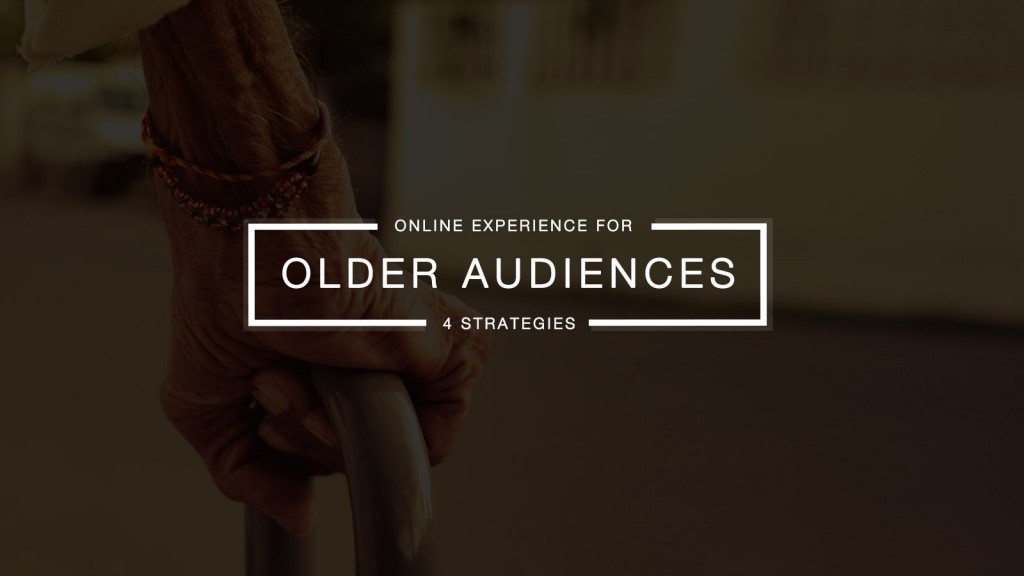4 Ways to Improve the Online Experience for Older Audiences

It’s easy get trapped in a narrow frame of mind when advertising to older generations; the very thought conjures up stock images of grey-haired couples strolling on the beach. And yet this market is anything but stereotypical: it includes people from all walks of life who just happen to be over a certain age.
Not only are they a diverse group, but they are also taking to the internet much faster than some may think – in the US, 57 per cent of people over 65 now use the internet (according to Statista), whilst in the UK, the over-55s age group account for more than 20 per cent of the online population.
In order to avoid clichéd messaging reaching highly skeptical eyes, brands need to gain a more nuanced understanding of this mature audience. Here are four ways to make sure your campaigns resonate with silver surfers.
Improving Online Experience for Older Audiences
Build Campaigns That Drive Calls

Just like younger generations, seniors view the internet as a highly convenient way to shop. However, what puts many off is the lack of human interaction. As Bhavesh Vaghela of ResponseTap explains, “the senior market cares about personalities – 36 per cent of those aged over 55 use the internet for research but prefer to talk to someone on the phone before they buy. Almost 60 per cent of those aged over 55 are more likely to return to a store or brand after speaking with them on the phone.”
Campaigns that drive older consumers to pick up the phone are likely to produce better conversions and higher order values. Therefore, marketers need to ensure that their company’s toll-free number is prominent on the website and all social pages, as well as in emails and display ads.
Connect Data Across Channels
In order to make the contact center experience as positive as possible it helps to know what phase the caller is in the purchase process. This is where connecting data across channels comes in.
Where did their journey begin? What content have they read and absorbed? Where were they when they decided to pick up the phone? Answering these questions using web analytics, and arming the contact center agent with that information, can ensure a cohesive on- and offline experience, and one more likely to end in a sale.
Educate Prospects Using Content Marketing
Older people generally have more time on their hands than their younger counterparts and so tend to research products and services extensively before making a purchase. Creating and promoting high-quality content will help attract these people to your website, and will also improve customer retention as you become recognized as a valuable information resource.

Internet banking, for example, is an attractive alternative to physically entering the branch – especially for older generations. The problem is that many people not familiar with the way the internet works get concerned about the security of their money. In order to combat this, Barclays, a UK bank, decided to offer downloadable guides that informed their customers about the benefits of online banking, whilst teaching them how to set up an account.
As one of the first banks to do this, they changed the negative public perception of their industry: no longer are they an evil, money-grabbing institution, but a friendly, selfless educator who cares about the elderly.
Leverage YouTube Video Advertising
Older generations, it turns out, are especially receptive to YouTube content: 33 per cent of UK consumers aged 60-69 watch videos on YouTube a few times a week (according to research from iProspect) – the same proportion as the 30-49 year olds. To reach this audience, consider creating targeted display and overlay ads within YouTube videos, or creating video content of your own.

In addition, over-70s are leading the way when it comes to consuming YouTube videos via tablet and web-enabled TVs. Eight per cent claim to use a Smart TV to access online videos, compared to just two per cent of 30-49 year olds. You can create some truly engaging experiences with interactive TVs, which essentially beam the internet onto a giant screen on the wall, with smartphones and tablets acting as the remote.
Mature audiences are a huge and lucrative market with an uncanny ability to defy stereotypes. Don’t overlook them when setting up and optimizing your online campaigns!
Do you know any other ways to engage older audiences online? Leave us a comment!
About the author:
Luke is the digital marketing lead at AccuraCast – a London-based agency – who writes extensively about technology, CX and trends in the search market industry.

Related articles
![Restaurant Competitor Analysis: 4 Easy Steps [Guide]](https://brand24.com/blog/app/uploads/2025/07/restaurant_competitor_analysis_blog_cover_615x345_1x-600x335.webp)

![Instagram Competitor Analysis in 5 Easy Steps [+Duolingo Case Study]](https://brand24.com/blog/app/uploads/2025/06/instagram_competitor_analysis_blog_cover_615x345-600x335.webp)
![How to Create a Social Listening Report? Template & Example [2025]](https://brand24.com/blog/app/uploads/2025/06/social_listening_report_blog_cover_615x345-600x335.webp)
![How to Write a Media Monitoring Report? [2025 Guide]](https://brand24.com/blog/app/uploads/2023/02/media_monitoring_report_business_strategy_blog_cover_615x345-600x335.webp)